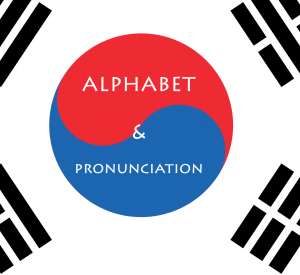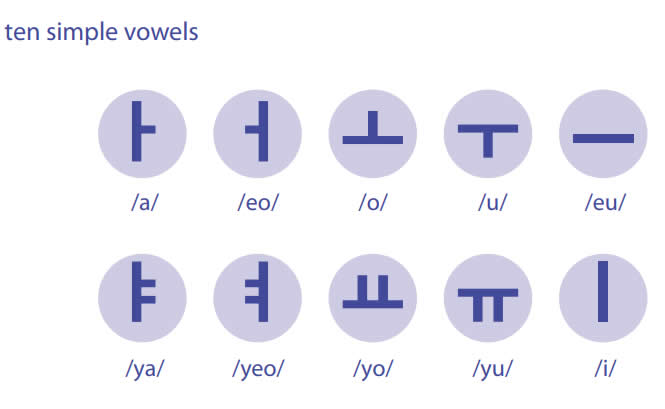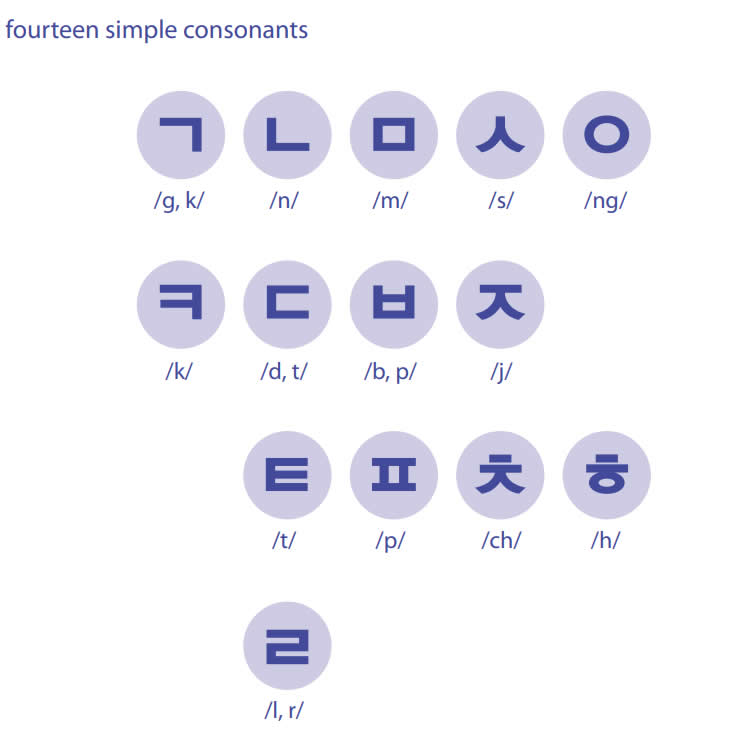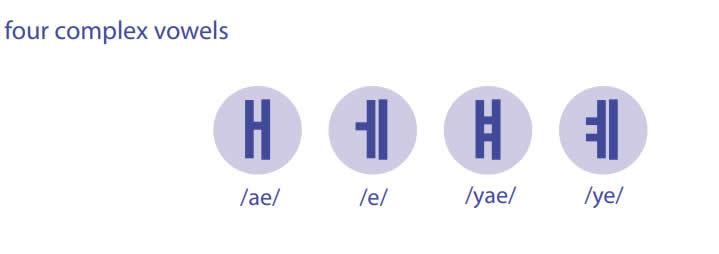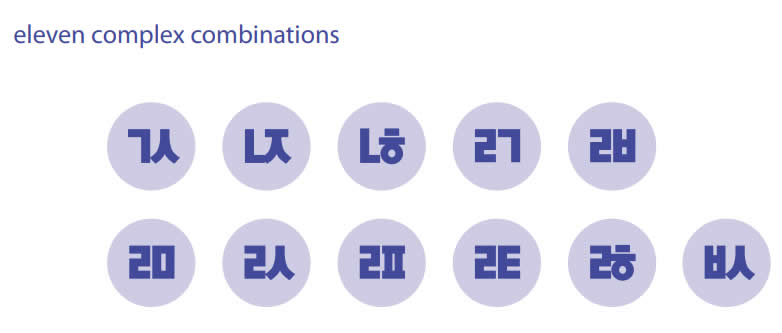Difference between revisions of "Language/Korean/Pronunciation/Alphabet-and-Pronunciation"
| Line 106: | Line 106: | ||
===Compound Consonants=== | ===Compound Consonants=== | ||
*ㅃ [pp] | *ㅃ [pp] | ||
| Line 116: | Line 116: | ||
*ㅆ [ss] - Like the single version of this letter, when it is at the end of a syllable, it sounds closer to a "tt" sound. | *ㅆ [ss] - Like the single version of this letter, when it is at the end of a syllable, it sounds closer to a "tt" sound. | ||
===Complex combinations=== | |||
[[File:Korean-Language-complex-combinations-PolyglotClub.jpg]] | |||
===Summary=== | ===Summary=== | ||
Revision as of 17:41, 5 November 2021
Hello Polyglots,😀
In today's lesson, you will learn how to write the different letters of the Korean alphabet, how to pronounce these letters whether it is through the International Phonetic Alphabet (IPA), or through a video with the pronunciation of the letters by a native speaker.
You will also find at the end of this lesson a virtual keyboard to be able to type each special character of this language.
Korean Alphabet
The Korean language has 40 different letters, which are separated into 4 main categories: basic vowels, basic consonants, compound vowels, and compound consonants. While learning Korean, it is incredibly important to learn the alphabet, especially if you ever want to become fluent in a language. This is because some of the pronunciations are very similar to one another, and this can become confusing. Another reason is because the letters don't sound exactly like the romanticized versions of the letters. Examples:
Basic Vowels
- ㅏ [a]
- ㅑ [ya]
- ㅓ [eo]
- ㅕ [yeo]
- ㅣ [i]
- ㅗ [o]
- ㅛ [yo]
- ㅜ [u]
- ㅠ [yu]
- ㅡ [eu]
Basic Consonants
- ㄱ [k, g] - Combination of the two sounds.
- ㄴ [n]
- ㄷ [d, t] - Normally sounds like a soft "d", but is sometimes romanticized as a "t".
- ㄹ [r, l] - Native Korean speakers are frequently unable to tell the difference between an "r" and an "l" sound, therefore, this letters sounds like a combination of the two.
- ㅁ [m]
- ㅂ [b, p, f, v] - This sounds closest to a "b", but it is romanticized into any of these 4.
- ㅅ [s] - At the end of a syllable, it sounds closer to a "t".
- ㅇ [ng] - At the beginning of a syllable, it is silent. At the end of a syllable, it sounds like "ng".
- ㅈ [j]
- ㅊ [ch]
- ㅋ [k] - Hard "k" sound.
- ㅌ [t] - Hard "t" sound.
- ㅍ [p]
- ㅎ [h]
Compound Vowels
Complex Vowels
- ㅐ [ae]
- ㅒ [yae]
- ㅔ [e]
- ㅖ [ye]
Diphtongs
- ㅘ [wa]
- ㅙ [wae]
- ㅚ [oe]
- ㅟ [wi]
- ㅝ [wo]
- ㅢ [ui]
- ㅞ [we]
Compound Consonants
- ㅃ [pp]
- ㄲ [kk]
- ㅉ [jj]
- ㄸ [tt]
- ㅆ [ss] - Like the single version of this letter, when it is at the end of a syllable, it sounds closer to a "tt" sound.
Complex combinations
Summary
| Letter | ㄱ | ㄲ | ㄴ | ㄷ | ㄸ | ㄹ | ㅁ | ㅂ | ㅃ | ㅅ | ㅆ | ㅇ | ㅈ | ㅉ | ㅊ | ㅋ | ㅌ | ㅍ | ㅎ | |
|---|---|---|---|---|---|---|---|---|---|---|---|---|---|---|---|---|---|---|---|---|
| IPA | [k] | [k*] | [n] | [t] | [t*] | [ɾ,l] | [m] | [p] | [p*] | [s] | [s*] | ∅,[ŋ] | [ʧ] | [ʧ*] | [ʧʰ] | [kʰ] | [tʰ] | [pʰ] | [h] | |
| Name | South | 기역 | 쌍기역 | 니은 | 리을 | 쌍디귿 | 리을 | 미음 | 비읍 | 쌍비읍 | 시옷 | 쌍시옷 | 이응 | 지읒 | 쌍지읒 | 치읓 | 키읔 | 티읕 | 피읖 | 히읗 |
| North | 기윽 | 된기윽 | 디읃 | 된디읃 | 된비읍 | 시읏 | 된시읏 | 된지읒 | ||||||||||||
| Letter | ㅏ | ㅐ | ㅑ | ㅒ | ㅓ | ㅔ | ㅕ | ㅖ | ㅗ | ㅘ | ㅙ | ㅚ | ㅛ | ㅜ | ㅝ | ㅞ | ㅟ | ㅠ | ㅡ | ㅢ | ㅣ |
|---|---|---|---|---|---|---|---|---|---|---|---|---|---|---|---|---|---|---|---|---|---|
| IPA | [a] | [æ] | [ja] | [jæ] | [ʌ] | [e] | [jʌ] | [je] | [o] | [wa] | [wæ] | [we] | [jo] | [u] | [wʌ] | [we] | [wi] | [ju] | [ɨ] | [ɨj] | [i] |
| Name | 아 | 애 | 야 | 얘 | 어 | 에 | 여 | 예 | 오 | 와 | 왜 | 외 | 요 | 우 | 워 | 웨 | 위 | 유 | 으 | 의 | 이 |
| Complexfinal | ㄳ | ㄵ | ㄶ | ㄺ | ㄻ | ㄼ | ㄽ | ㄾ | ㄿ | ㅀ | ㅄ |
|---|
Video - Korean Alphabet Pronunciation by a Native Speaker
Korean Online Virtual Keyboard
Links
- Pronunciation tips: https://www.howtostudykorean.com/unit0/197-2/
